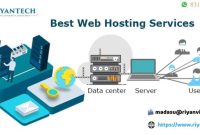When it comes to creating a website, WordPress has established itself as one of the most popular content management systems (CMS) available today. Often referred to as the “WordPress engine,” this powerful platform powers over 40% of all websites on the internet. In this comprehensive guide, we will delve deep into the WordPress engine, exploring its features, advantages, and how to leverage it to create an effective online presence.
What is the WordPress Engine?
The term “WordPress engine” refers to the underlying framework and functionality that powers WordPress websites. It encompasses the core software that enables users to create, manage, and publish content efficiently. The WordPress engine is built on a combination of PHP, MySQL, and HTML, allowing users to create dynamic websites with a user-friendly interface.
Key Components of the WordPress Engine
- Core Software: The WordPress core is the foundation of the platform. It includes essential features such as user management, media handling, and a powerful editor for creating and formatting content. Regular updates ensure that the core software remains secure and efficient.
- Themes: WordPress themes determine the visual appearance of your website. Users can choose from thousands of free and premium themes to customize their site’s design and layout. Themes can be easily installed and modified to suit individual preferences.
- Plugins: Plugins are extensions that enhance the functionality of WordPress. With over 58,000 plugins available in the official repository, users can add features such as SEO optimization, social media integration, e-commerce capabilities, and more. This extensibility is one of the primary reasons for WordPress’s popularity.
- Database: WordPress uses a MySQL database to store all content, settings, and user data. The database architecture allows for quick retrieval and management of information, ensuring a smooth user experience.
- Admin Dashboard: The WordPress dashboard provides a user-friendly interface for managing the website. Users can easily create and edit posts, manage media, customize themes, and configure settings from this central hub.
Benefits of Using the WordPress Engine
Choosing the WordPress engine for your website comes with numerous advantages:
1. User-Friendly Interface
WordPress is designed to be accessible for users of all skill levels. Its intuitive dashboard allows beginners to create and manage content without needing extensive technical knowledge. The editing interface is straightforward, featuring a visual editor that simplifies the formatting process.
2. Flexibility and Customization
The WordPress engine offers unparalleled flexibility in terms of design and functionality. With thousands of themes and plugins available, users can tailor their websites to meet specific needs, whether it’s a personal blog, a business website, or an e-commerce store. This level of customization ensures that each site can reflect its brand identity effectively.
3. SEO-Friendly Structure
WordPress is inherently optimized for search engines, making it easier for websites to rank higher in search results. The platform allows for easy integration of SEO plugins, such as Yoast SEO, which guide users in optimizing their content for better visibility. Additionally, WordPress generates clean and search-engine-friendly URLs, further enhancing SEO efforts.
4. Strong Community Support
With a large global community of developers, designers, and users, WordPress benefits from extensive support resources. Users can access forums, documentation, tutorials, and online courses to troubleshoot issues or learn best practices. This community-driven approach fosters continuous improvement and innovation within the platform.
5. Regular Updates and Security
The WordPress engine is regularly updated to address security vulnerabilities and improve functionality. The community actively monitors potential threats and releases patches to keep websites secure. Additionally, users can enhance security by implementing plugins that provide additional layers of protection.
Setting Up Your WordPress Engine
Getting started with the WordPress engine is a straightforward process. Here’s a step-by-step guide:
Step 1: Choose a Domain Name and Hosting Provider
Before you can install WordPress, you need a domain name (the web address for your site) and a hosting provider (the service that stores your website files). When selecting a hosting provider, look for one that offers one-click WordPress installations and strong performance.
Step 2: Install WordPress
Most hosting providers offer simple installation processes for WordPress. With one-click installation, you can set up your WordPress engine in minutes. Follow the prompts provided by your hosting service to complete the installation.
Step 3: Configure Your Settings
After installation, log in to your WordPress admin dashboard. Here, you can configure essential settings, including:
- General Settings: Update your site title, tagline, and timezone.
- Permalinks: Choose a permalink structure that is SEO-friendly (e.g., Post name).
- Reading Settings: Decide whether to display your latest posts or a static page on the homepage.
Step 4: Choose and Customize a Theme
Visit the “Appearance” section in the dashboard to browse and select a theme that suits your style. You can customize your theme’s colors, fonts, and layout through the WordPress Customizer. Many themes also come with demo content, helping you visualize the end result.
Step 5: Install Essential Plugins
Enhance your website’s functionality by installing plugins. Some essential plugins to consider include:
- Yoast SEO: Helps optimize your content for search engines.
- WooCommerce: Allows you to create an online store.
- Contact Form 7: Enables the creation of customizable contact forms.
- Wordfence Security: Provides firewall protection and malware scanning.
Step 6: Create and Publish Content
With your WordPress engine set up, you can start creating content. Use the built-in editor to write blog posts, add images, and format your content. Take advantage of categories and tags to organize your posts effectively.
Step 7: Optimize for Performance
To ensure your website runs smoothly, consider implementing caching plugins like WP Super Cache or W3 Total Cache. These plugins help improve loading times by storing static versions of your pages. Additionally, optimize images to reduce file sizes without sacrificing quality.
Advanced Features of the WordPress Engine
While the WordPress engine is powerful out of the box, it also offers advanced features for users looking to take their websites to the next level:
1. Custom Post Types
In addition to standard posts and pages, WordPress allows users to create custom post types. This feature enables you to build a diverse range of content, such as portfolios, testimonials, or product listings. By defining custom post types, you can better organize and display specific content types.
2. Custom Taxonomies
Custom taxonomies are another advanced feature that enhances content organization. In addition to categories and tags, users can create custom taxonomies to group content by specific criteria. For example, you could create a custom taxonomy for genres on a book review site.
3. Multisite Capabilities
WordPress Multisite allows you to manage multiple WordPress sites from a single installation. This feature is particularly useful for businesses or organizations that operate multiple sites under a common brand. With Multisite, you can easily manage themes, plugins, and user permissions across all sites.
4. API Integration
The WordPress REST API enables developers to build applications that interact with WordPress sites. This feature allows for seamless integration with third-party services, enabling functionalities such as mobile app development or custom dashboards.
5. E-commerce Functionality
With the WooCommerce plugin, WordPress transforms into a full-fledged e-commerce platform. This plugin allows users to create online stores, manage inventory, process payments, and offer various shipping options. WooCommerce’s flexibility and extensive extensions make it a popular choice for online retailers.
Case Study: Building a Successful Blog with the WordPress Engine
Background
Jane is a food enthusiast who decided to start a blog to share her recipes and culinary experiences. With limited technical knowledge, she sought a platform that would allow her to create and manage her blog easily. After researching various options, she chose the WordPress engine for its user-friendly interface and extensive customization options.
Implementation Process
- Domain and Hosting: Jane registered the domain “CulinaryCreations.com” and selected a reliable hosting provider that offered one-click WordPress installation.
- Theme Selection: She chose a visually appealing theme that showcased her recipes effectively. With the help of the WordPress Customizer, Jane personalized her theme to match her brand colors.
- Plugins Installation: Jane installed essential plugins, including Yoast SEO for optimization, Jetpack for site performance, and WP Recipe Maker to display her recipes in a user-friendly format.
- Content Creation: She began creating blog posts, sharing detailed recipes along with high-quality images. Jane utilized categories to organize her content, making it easy for readers to navigate her blog.
- Promotion and Growth: Jane promoted her blog through social media channels and engaged with her audience through comments. Over time, her blog gained traction, and she began to explore monetization options, such as affiliate marketing and sponsored content.
Results
After a year of consistent effort, Jane’s blog experienced significant growth:
- Increased Traffic: Jane attracted thousands of monthly visitors, thanks to her engaging content and effective SEO practices.
- Brand Partnerships: As her blog grew, she secured partnerships with food brands for sponsored posts and product reviews.
- Community Engagement: Jane built a loyal community of readers who eagerly anticipated her new recipes and engaged with her on social media.
Conclusion
The WordPress engine is a powerful and versatile platform that empowers users to create and manage a wide range of websites, from personal blogs to complex e-commerce stores. Its user-friendly interface, extensive customization options, and strong community support make it an ideal choice for individuals and businesses alike.




